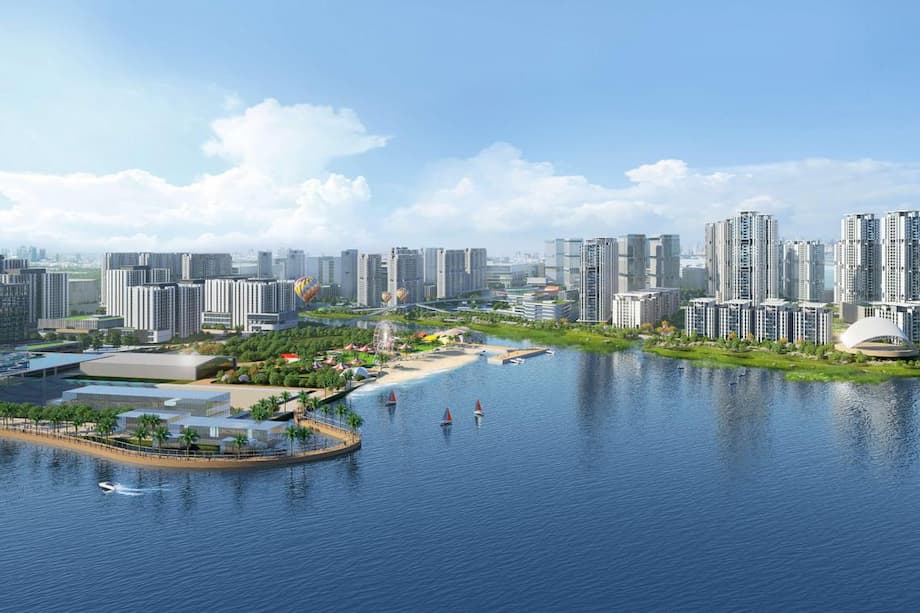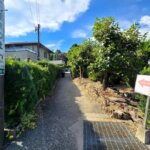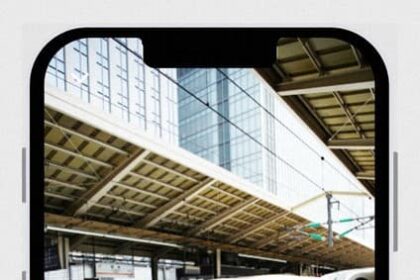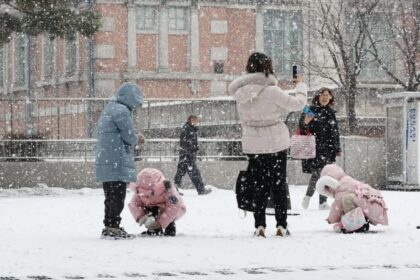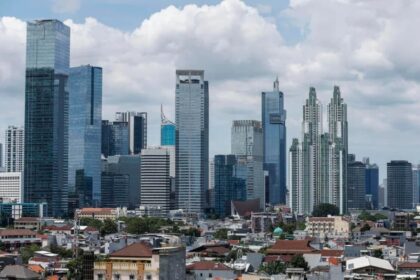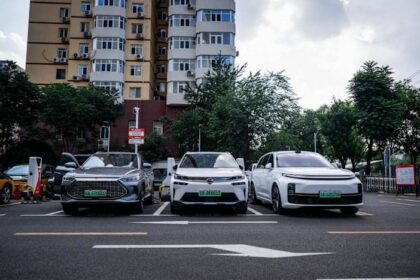Singapore’s Changing Definition of Prime Public Housing
For decades, Singapore’s public housing system has been a global model for affordable, high-quality homes. Managed by the Housing and Development Board (HDB), it has provided more than three-quarters of Singaporeans with a place to call their own. Traditionally, “prime” public housing referred to flats located near the city center—areas with the best amenities, shortest commutes, and highest demand. But recent policy shifts, rising prices, and changing social needs are redefining what it means for a public flat to be “prime.”
- Singapore’s Changing Definition of Prime Public Housing
- How Did Singapore’s Public Housing System Evolve?
- Why Did the Government Change the Definition of ‘Prime’?
- The New Flat Classification: Standard, Plus, and Prime
- The Prime Location Public Housing (PLH) Model
- Affordability: Government Assurances and Policy Tools
- Social Impacts: Marriage, Singles, and Inclusivity
- Design and Lifestyle: The Rise of Open-Plan Flats
- Challenges and Contradictions in Public Housing Policy
- Political Debate and the Road to GE2025
- What Does the Future Hold for Prime Public Housing?
- In Summary
In his recent National Day Rally speech, Prime Minister Lawrence Wong signaled a new era for Singapore’s northern estates, long seen as remote, and for the very concept of prime public housing. The government’s evolving approach aims to balance affordability, inclusivity, and the aspirations of a changing population.
How Did Singapore’s Public Housing System Evolve?
Singapore’s public housing journey began in the 1930s, with the Singapore Improvement Trust building basic flats to address overcrowding and poor living conditions. After independence, the HDB was formed in 1960 to accelerate construction and resettle kampong dwellers into modern, high-rise flats. Over time, the focus shifted from basic shelter to creating vibrant, self-contained towns with amenities, parks, and schools.
By the 1980s, home ownership became a cornerstone of national policy. Residents could lease flats for 99 years, and the government introduced grants and upgrading schemes to improve quality of life. Today, about 79% of Singaporeans live in HDB flats, with 90% of households owning their homes. Public housing is not just a roof over one’s head—it is a source of national pride, a tool for social integration, and, increasingly, a valuable asset.
Why Did the Government Change the Definition of ‘Prime’?
Traditionally, prime public housing meant proximity to the city center. Flats in central locations like Tanjong Pagar, Queenstown, or the upcoming Greater Southern Waterfront were seen as the most desirable—and the most expensive. But as Singapore’s urban landscape matured, the old classification of “mature” versus “non-mature” estates began to blur. Remote areas gained better transport links and amenities, while work-from-home trends and lifestyle changes shifted what people valued in a home.
At the same time, the resale market for HDB flats heated up. Headlines about million-dollar resale flats—once unthinkable—became common, even in non-central locations. The COVID-19 pandemic disrupted construction, pushing more buyers into the resale market and driving up prices. The government faced a dilemma: how to keep public housing affordable and accessible, especially in prime locations, while ensuring fairness and social mixing.
Expert Insight: Does Location Still Matter?
According to Nicholas Mak, Chief Research Officer at Mogul.sg, the government is now broadening the definition of “prime.” He explained that:
“Places with great amenities and future potential are in the running, even if they aren’t yet universally considered prestigious.”
This shift means that areas once seen as remote—like the northern estates—could soon be considered prime, especially as new transport links and amenities come online.
The New Flat Classification: Standard, Plus, and Prime
In August 2023, Singapore’s leaders announced a major overhaul of the HDB flat classification system. Starting in the second half of 2024, all new Build-to-Order (BTO) flats will be categorized as Standard, Plus, or Prime, replacing the old mature/non-mature labels. This new framework aims to reflect the realities of Singapore’s housing market and address the challenges of affordability and inclusivity.
What Do the New Categories Mean?
- Standard Flats: These make up the bulk of new supply, are located islandwide, and come with regular subsidies and a five-year Minimum Occupation Period (MOP).
- Plus Flats: Located in more desirable areas (often near transport hubs or regional centers), Plus flats have stricter resale conditions, a 10-year MOP, and a subsidy clawback upon resale. Only Singapore citizens can buy resale Plus flats, and owners cannot rent out the entire flat even after the MOP.
- Prime Flats: These are in the most central, sought-after locations, come with the highest subsidies, and the tightest restrictions. They also have a 10-year MOP, strict resale eligibility, and a subsidy clawback. Prime flats are designed to ensure that even the most desirable public housing remains accessible to a broad segment of Singaporeans.
These changes are designed to keep homeownership affordable, maintain a good social mix, and reinforce the idea of public housing as a primary residence—not an investment vehicle.
The Prime Location Public Housing (PLH) Model
Launched in November 2021, the Prime Location Public Housing (PLH) model was the government’s first major step to address the “lottery effect” of getting a flat in a prime location. Under the PLH model, new flats in central areas (like Rochor or the Greater Southern Waterfront) come with additional subsidies, but also stricter conditions:
- Subsidy Recovery: Owners must pay a percentage of the resale price back to HDB to recover the extra subsidies when they sell.
- Longer MOP: Owners must live in the flat for at least 10 years before selling.
- Resale Restrictions: Only buyers who meet eligibility criteria (citizenship, family nucleus, income ceiling, no private property ownership) can buy PLH flats on the resale market.
- No Whole-Flat Rental: Owners cannot rent out the entire flat, even after the MOP, though renting out spare rooms is allowed.
The PLH model aims to prevent windfall gains, promote inclusivity, and ensure that prime flats are used as homes, not speculative assets.
Affordability: Government Assurances and Policy Tools
With rising resale prices and public anxiety about being priced out, the government has repeatedly assured Singaporeans that public housing will remain affordable. Prime Minister Lawrence Wong emphasized that new BTO flats are priced in relation to income, not the resale market. More than 80% of first-time buyers can service their loans through their Central Provident Fund (CPF) savings, with little or no cash outlay.
To further support affordability, the government has:
- Increased market discounts and housing grants, such as the Enhanced Housing Grant.
- Ramped up the supply of new flats, aiming to launch up to 100,000 units by 2025.
- Shortened waiting times for BTO flats, with most new projects offering waiting times under four years.
- Introduced means-tested grants and subsidies, especially for lower- and middle-income households.
For flats in prime locations, additional subsidies are offered, but these are clawed back upon resale to prevent excessive windfalls. Income ceilings and eligibility conditions for resale buyers are also being tightened to ensure fairness and social mixing.
Social Impacts: Marriage, Singles, and Inclusivity
Public housing policy in Singapore is closely tied to social objectives, particularly family formation. Traditionally, only married couples or those forming a family nucleus could apply for most HDB flats before age 35. Singles aged 35 and above were limited to smaller flats in non-mature estates.
Recent policy changes are expanding options for singles. From mid-2025, singles aged 35 and above can apply for two-room Flexi BTO flats in all locations and buy any size of Standard and Plus resale flats. For Prime flats, singles can only buy two-room resale units. The income ceiling for singles remains at $7,000 per month.
These changes aim to reflect evolving social norms and support a more diverse population. However, as academic research points out, the system still incentivizes early marriage and family formation, shaping not just living arrangements but also romantic relationships and life choices.
Public Housing and the Singapore Dream
Public housing is deeply intertwined with the Singapore Dream—the aspiration for stability, homeownership, and upward mobility. But as Prime Minister Wong noted, the dream is evolving. Younger Singaporeans increasingly seek personal fulfillment and purpose, not just material success. Housing policy must adapt to these changing aspirations, supporting both traditional families and new forms of households.
Design and Lifestyle: The Rise of Open-Plan Flats
Singapore’s public housing is also changing in design and lifestyle. Responding to rising affluence and changing tastes, the HDB is piloting open-plan layouts in new projects. In October 2024, 310 units in Kallang-Whampoa will feature contiguous living and bedroom spaces, with structural columns moved to the edges and no internal partition walls. This gives homeowners more flexibility to customize their living spaces, reflecting a shift from standardized layouts to more personalized homes.
Challenges and Contradictions in Public Housing Policy
Despite its successes, Singapore’s public housing system faces growing challenges and contradictions. Rising prices have made affordability a concern, especially for young Singaporeans. The system’s dual role—as both a social necessity and a market-driven asset—creates tensions:
- Public housing is treated as both a right and a privilege, with strict eligibility and resale rules.
- Residents are called “owners” but are technically lessees with limited rights under a 99-year lease.
- Policies to promote inclusivity (like ethnic quotas and family nucleus requirements) can also exclude certain groups, such as singles, the poor, or ethnic minorities.
- The opening of the resale market has led to price inflation, speculation, and increased inequality.
Experts and political parties have proposed various solutions, such as extending leases, rebuilding old flats, pricing new flats based on construction costs, expanding social rental housing, and increasing transparency. The government, however, maintains that its approach balances supply, demand, and fiscal responsibility.
Political Debate and the Road to GE2025
Housing affordability is a central issue in Singapore’s political landscape, especially as the country heads toward the next General Election in 2025. The ruling People’s Action Party (PAP) has prioritized ramping up supply, increasing grants, and implementing the new flat classification framework. Opposition parties have called for more radical changes, such as building homes ahead of demand, expanding public rental schemes, and lowering the eligibility age for singles.
Analysts note that the new classification model is a significant shift, restructuring pricing and eligibility for high-value HDB housing. Ultimately, the challenge is to balance providing affordable shelter, maintaining asset value, and ensuring fiscal sustainability—without disrupting the delicate equilibrium of the resale market.
What Does the Future Hold for Prime Public Housing?
Singapore’s evolving approach to prime public housing reflects broader changes in society, the economy, and urban planning. As the definition of “prime” expands beyond just location to include amenities, connectivity, and future potential, more areas of the island could become desirable places to live.
At the same time, the government’s commitment to affordability, inclusivity, and social mixing remains strong. New policies aim to ensure that public housing continues to serve as a foundation for stability, opportunity, and community life. But as prices rise and social norms shift, the system will need to keep adapting—balancing the needs of today’s residents with the aspirations of future generations.
In Summary
- Singapore’s concept of prime public housing is shifting from a focus on central locations to include areas with strong amenities and future potential.
- The new Standard, Plus, and Prime classification system replaces the old mature/non-mature estate labels, with stricter rules and subsidies for more desirable flats.
- The Prime Location Public Housing (PLH) model introduces longer occupation periods, subsidy clawbacks, and resale restrictions to curb speculation and promote inclusivity.
- Affordability remains a top government priority, with increased grants, ramped-up supply, and policies to keep new flats priced in relation to income.
- Recent changes expand options for singles and reflect evolving social norms, but the system still incentivizes early marriage and family formation.
- Design trends are shifting toward more flexible, open-plan layouts, reflecting changing lifestyles and preferences.
- Challenges remain, including rising prices, social exclusion, and the tension between treating public housing as a necessity and an asset.
- Political debate over housing policy is intensifying ahead of GE2025, with different parties proposing various solutions to balance affordability, inclusivity, and market stability.


